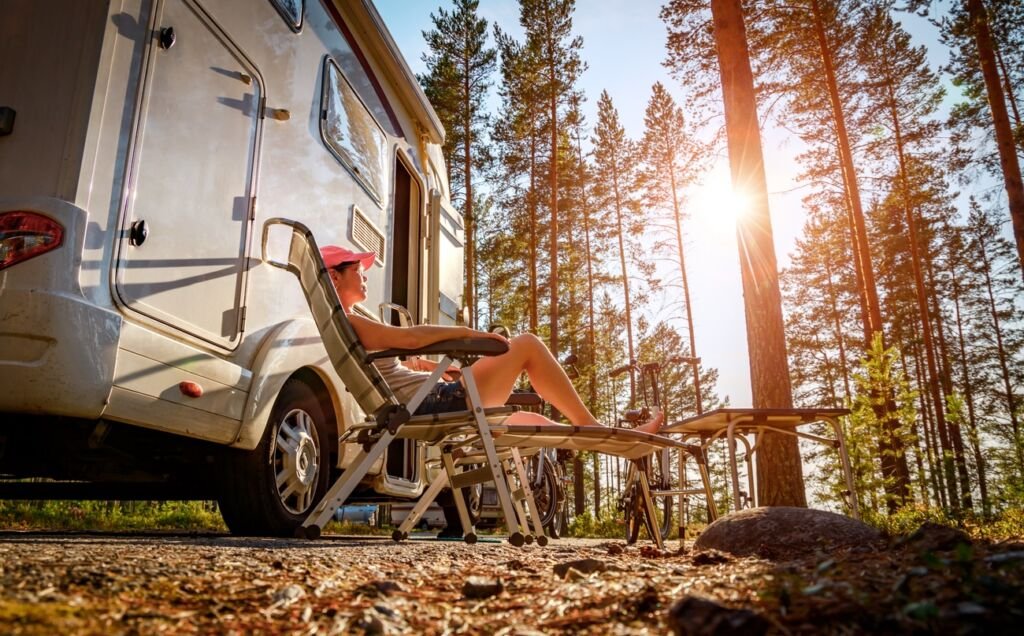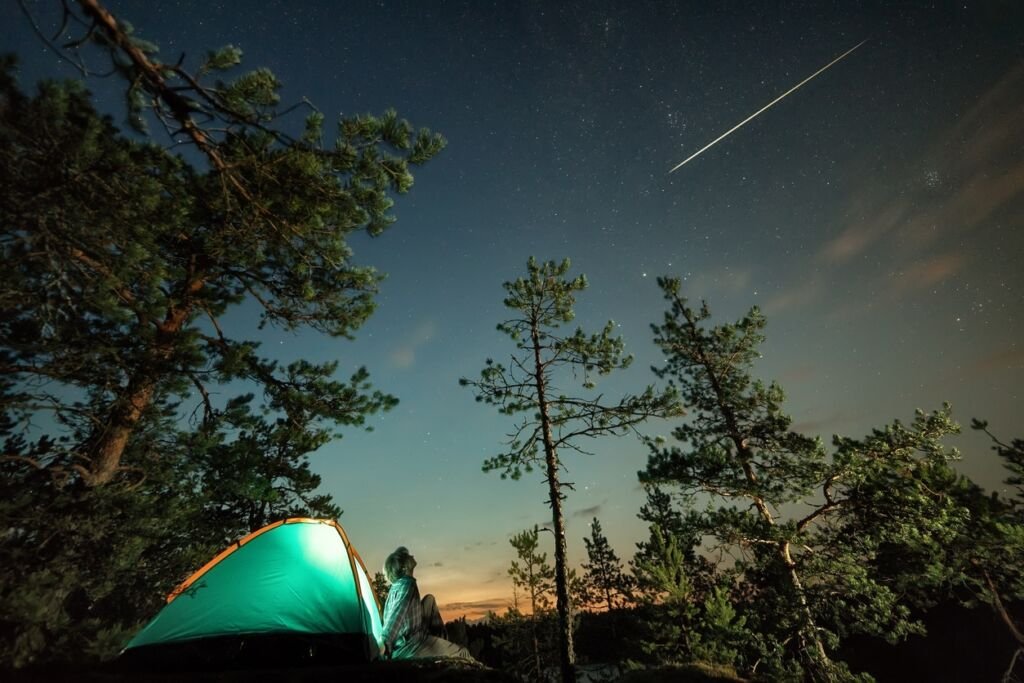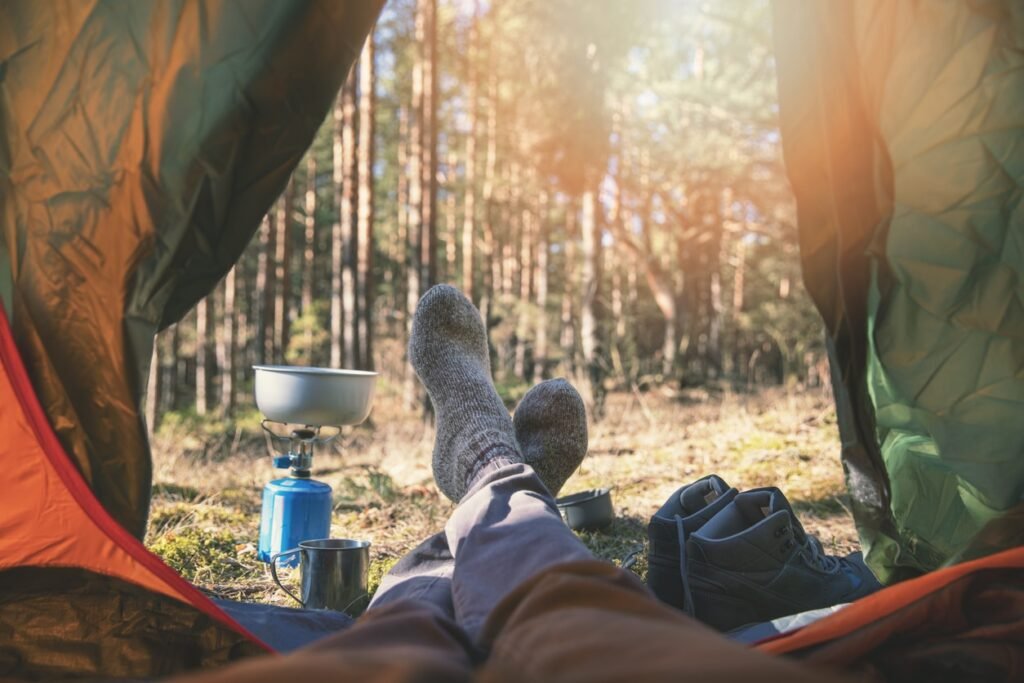

A s one of the United States’ most iconic regions with ancient evergreen forests, spectacular raging rivers, stunning mountains and wind-swept plains, Oregon is full of natural sights ready to be discovered. And we believe dispersed camping in Oregon is one of the best ways to experience and enjoy them! Thankfully, dispersed camping in Oregon is legal and free on publicly owned land – such as areas under the control of the Oregon Department of Forestry and Bureau of Land Management. Which makes camping a fantastic way to explore the the ‘Beaver State’. We explain the rules for dispersed camping in Oregon in this article, along with forbidden areas and regulations for campfires. So grab your tent or RV – let your adventure begin!

DISCLAIMER: Below we give general advice, but we always recommend staying in an official campsite. If you choose to go dispersed camping, then make sure you do so with someone who already knows the area where you’re planning on camping for your own safety. In our opinion, there’s nothing better than camping. It’s a chance to get back to basics, enjoy nature, and separate yourself from the hustle and bustle of 21st century life. It also allows you to experience some of nature’s best views for free. The fantastic thing about Oregon is that dispersed (primitive) camping is allowed and legal, as long as you are camping on state ground and adhere to a few simple guidelines. We outline those further down. Just remember that public land should be treated with respect – just as you would like your own land to be treated. We have tips on how to camp respectfully further down this article. Land looked after by the Bureau of Land Management, National Park Service, Oregon Department of Forestry and other state institutions will be publicly owned. Typically any areas that are green on Google Maps are also publicly owned. A great state map, such as this one could help in finding camping spots too. Keep an eye on contours as the more spaced out they are on a map, the flatter the ground will be. Maps can also help pinpoint potential water sources to camp nearby. Just be aware that there are a few areas where dispersed camping in Oregon is forbidden:
While you can camp almost everywhere else, the Bureau of Land Management and Oregon Department of Forestry has also made dispersed camping areas that are situated beside popular hiking trails. These exist in the hope of encouraging free campers to camp in the same place, and therefore reduce the impact on the environment.
If you’re interested in primitive camping within one of these, it’s best to contact the regional office of the area you are visiting to ask for locations.
You can also find cheap campsites in Oregon’s state forests by clicking here.

Legally in Bureau of Land Management Areas you can camp for two weeks at a time within a 30 mile radius during a 28-day period.
What that means, is that you may camp within a 30 mile radius for two weeks. Either all in one block, or spread out across a 28-day period. This is perfect for hikers who will move camp a few miles at a time.
The regulations are slightly different in Oregon’s state forests. You may camp at one site for a maximum of 14 days, before moving to a new site. While regulations vary, your new campsites should be several miles (at least five) away from your previous one.

Once you’ve found your camping spot, make sure you leave your pitch the way you found it, and minimize waste.
When going to the toilet, state authorities ask campers to go at least 200 feet from a water source, trail or campsites. Then use a trowel (like this folding one) to bury human waste at least six inches underground. Take any tissue paper back home with you – use a ziplock bag to keep it sealed.
There are many different water sources in Oregon, but remember to always have plenty of water on you when camping and walking. A space-saving collapsible water bottle would be a good purchase. But do ensure that water from any undeveloped source is safe by treating it. That means heating it until it comes to a boil, or using water purification tablets/filter.
Campers are also asked to abide by the seven principles of leave no trace – they can be seen here.
With bears roaming Oregon’s forests, you must take steps to avoid attracting them to your campsite. We advise:

Wildfires are a huge problem in Oregon, and the penalties for ignoring fire restrictions can be severe.
Subsequently, campfires and charcoal BBQs are forbidden in state forests during Oregon’s fire season, which usually runs from July through to mid-October. Dates can change, so make sure to check before camping. You can see current fire information here and current area restrictions here.
If you have checked with local authorities and they’ve said it is ok to build a fire then remember to only use dead wood that is no larger than wrist size, and to never leave a campfire or stove unattended – it’s illegal to do so. You will know your campfire is out if you can stick your hand into the ashes and they are cool to the touch.
Instead of building campfires, you could use a storm cooker – but check local laws first. Then there is much less wildfire risk and you can cook knowing that the fire is contained. We believe the best ones on the market are Trangia storm cookers.